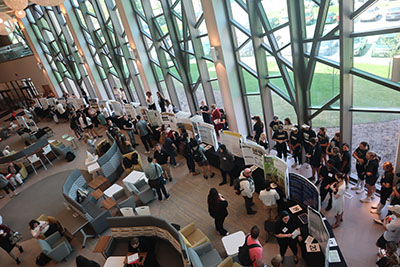Demonstration in Free Music Improvisation Practices
Student Type
Undergraduate
College Affiliation
College of Arts and Humanities
Department
Music Education
Submission Type
Oral Presentation
Abstract
This research aims to investigate and demonstrate how the creative process is made, how to teach it, and why learning about how to use free improvisational techniques is important to the developing musician. Improvisation is a core element of free and improvisational music, and performers often rely on spontaneous and intuitive decision-making. Oftentimes, the common music education core does not dive into techniques that can develop a musician's creativity; rather it teaches how to play music or notes that have already been played before, not allowing for new ideas to be created. Through a mixed-methods approach that includes observations and analysis of writings and recordings, this study seeks to find ways to expand and unlock a musician’s creativity as a performer in a group using various techniques. The findings of this study will contribute to the development of new pedagogical approaches to improvisation and shed light on the complex dynamics of creative collaboration in experimental music contexts.
Recommended Citation
Alcorn, Nicholas, "Demonstration in Free Music Improvisation Practices" (2023). 2023 Student Academic Showcase. 6.
https://digitalcommons.lindenwood.edu/src_2023/Oral_Presentations/Session1/6
Demonstration in Free Music Improvisation Practices
This research aims to investigate and demonstrate how the creative process is made, how to teach it, and why learning about how to use free improvisational techniques is important to the developing musician. Improvisation is a core element of free and improvisational music, and performers often rely on spontaneous and intuitive decision-making. Oftentimes, the common music education core does not dive into techniques that can develop a musician's creativity; rather it teaches how to play music or notes that have already been played before, not allowing for new ideas to be created. Through a mixed-methods approach that includes observations and analysis of writings and recordings, this study seeks to find ways to expand and unlock a musician’s creativity as a performer in a group using various techniques. The findings of this study will contribute to the development of new pedagogical approaches to improvisation and shed light on the complex dynamics of creative collaboration in experimental music contexts.



Comments
This oral presentation will be in the form of a demonstration played by myself on the saxophone, and an assistant playing the snare drum.